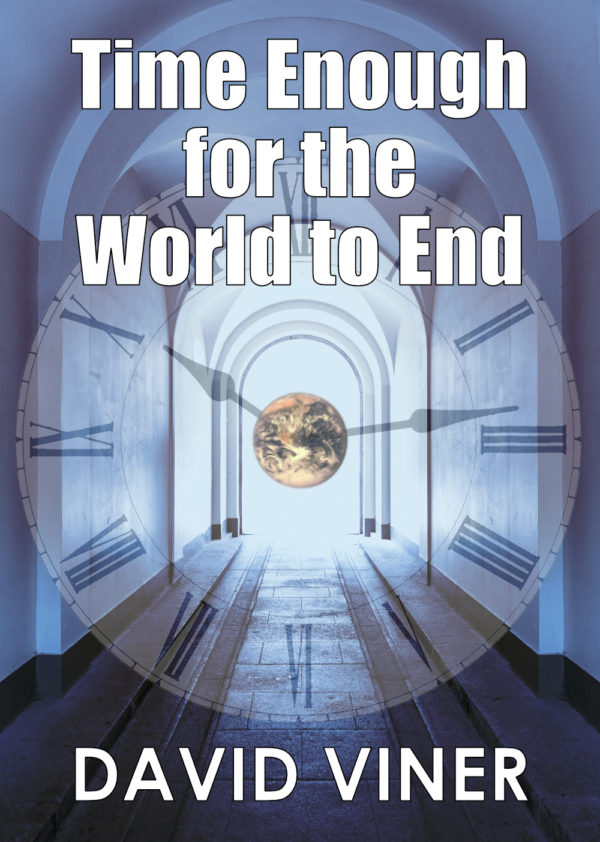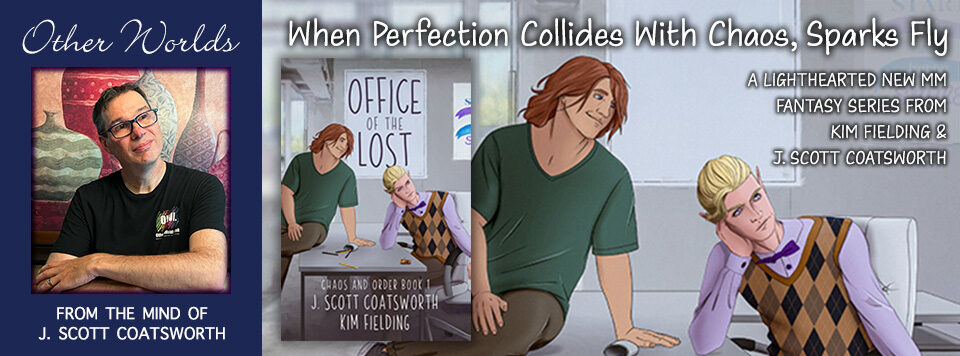
Welcome to my weekly Author Spotlight. I’ve asked a bunch of my author friends to answer a set of interview questions, and to share their latest work.
David’s Book Splinters will be
free on Amazon from Sept 12-16.
Today: Ex-punk rock guitarist David Viner’s working life started in electronics before migrating to computer programming in the mid-1980s and on to website design in the late 1990s, going self-employed in 2005.
David has been a member of the Redwell Writers Group (www.redwellwriters.org) in Norwich, UK since 2006, which helped him find his feet in the connected worlds of writing, editing and publishing. His first two published stories appeared a year after joining the group. In 2017 and 2019 he edited the two Redwell Writers anthologies, the latter appearing in early 2020. He also managed to publish his novels, Time Portals of Norwich and Splinters later in 2020 having been delayed due to a minor thing called Covid. In late 2021 his first collection of short SF stories, Time Enough for the World to End, was published and he is currently completing Time’s Revenge, the sequel to Time Portals of Norwich.
David has also been using the online writing platform, Wattpad, since 2018 to try out short stories. Both Splinters and Time Portals of Norwich were initially serialised there, though the latter now only has sample chapters available on the platform and the version of Splinters there, while complete, is far from the final printed version. His story, Wisdom of the Ancients, which was written for joint Wattpad/National Geographic competition in late 2018 was placed in the top 10 submissions for the competition, out of originally something like 5,500 entries. Since May 2020 it has almost constantly appeared in the top 5 of Wattpad’s Science Fiction ‘hot chart’, often popping back to #1 for a few days at a time for no apparent reason!
Thanks so much, David Viner, for joining me!
J. Scott Coatsworth: What was your first published work? Tell me a little about it.
David J. Viner: In early 2006, when I joined what later became the Redwell Writing Group in Norwich in the UK, one of the first things mentioned by the person running it (local author Andrew Hook) was that another local author/editor, Ian Millsted, was calling for submissions to be included in an anthology based in East Anglia, which was going to be called Angles. It also had financial support from the local Norwich City Council.
I already had a story written in the 1990s for a Christmas writing competition run by a local newspaper with the theme of ‘A Winter’s Tale.’ At various times the story was called either Home For Christmas, Homecoming or A Winter’s Tale. All of those titles make it sound a bit ‘cutesy’ – not so! Instead, it’s about a new ice age that has resulted in the British Isles becoming glaciated, with the English channel also freezing over. The main character in the tale who, like most of the few from the UK who had actually survived, is eking out his existence on the permafrost of France under the savagery of a new feudalism-based society. He decides he’s had enough and, knowing he won’t survive for much longer, has the urge to see the city of his birth once more before he dies. So, he manages to return home to Norwich where, starving, he eventually perishes, delirious but happy, in the frozen remains of Norwich Castle.
The story (as Home For Christmas) received a new edit and, via suggestions from the writing group, was somewhat improved over the original. It was submitted to Ian Millsted and, a few months later, once he had received enough acceptable stories and knew which ones were to be included, he accepted the story for publication. In fact, four of us in the writing group (including Andrew Hook) were included in the anthology out of a total of eleven stories. One of the other stories was from relatively famous local author, Brian Aldis, which put the rest of us in good company. Although the book has a copyright year of 2006, it took quite a while to be finalised and printed, so that it wasn’t until around February 2007 that copies of it finally appeared.
Meanwhile, around December 2006 I had been playing around with flash fiction and had come up with a story called Eight Excerpts From A Secret Inter-Dimensional War. This teased a much larger story within its eight tiny snippets, which was about creatures invading the Earth from another dimension. In the writing group it was very well received, a couple of people stating that it was the best they had seen me produce. Andrew Hook suggested that I submit it to either Interzone magazine or a new magazine called The Hub. I tried the latter and the story was almost immediately accepted and printed in their Winter 2007 edition.
Because of the speed at which The Hub magazine came out compared to the long development of Angles, both stories appeared in print within a week of each other. If I remember correctly, Angles was out first, though I think I didn’t actually see a copy until after my author’s copy of The Hub had been sent to me.
So, technically, Home For Christmas was the first but it was a close thing! I had to wait another year before my third published story, No Accident, saw the light of day in the second edition of a magazine that was, rather confusingly, called First Edition.
JSC: What do you do when you get writer’s block?
DJV: I don’t think I’ve really ever had writer’s block. But, if I’m stuck on moving a story along, or if I want to develop an idea, then a nice long soak in a hot bath does wonders – it’s the place I seem to get many of my ideas or work out plots… well, until the water gets cold, anyway!
JSC: How long on average does it take you to write a book?
DJV: So far, I have published two novels: Time Portals of Norwich and Splinters. These were both printed/published in August 2020. I have also published a book of short stories but, as those were written at various times over the past 20 years or so, I can’t really count that one!
Time Portals of Norwich took me about a year to write from start to finish (October 2018 to September 2019) and then another six months or so to get the beta-reading and editing complete to a stage where it was ready for printing. Then Covid came along and delayed things by several more months!
Splinters was the opposite. I still have around 100 hand-written pages of an untitled story that dates from the late 1970s. These contain embryonic versions of the two main characters: Rick and Long, along with a few themes used in the final book – e.g. it’s set in a version of London that has been walled in and contains a ‘vehicle’ that they will use to escape. This version was set in the early twenty-first century, which seemed a very long way off back in the 1970s. It hadn’t got much of a plot and I’m sure I really had no real idea of where it was going. I then restarted the novel in the mid-1980s using EasyScript, an early crude word processor for the Commodore 64. The story was pushed a further 30 years into the future and got as far as about three or four chapters using a few of the themes from the original but fleshing them out far more satisfactorily. But using such an early word processor was a battle in itself. Over the next few years it migrated from EasyScript to VizaWrite Classic (Commodore 128, 80-column mode) to ProText (Amiga) where the initial chapters were tweaked and expanded, but not a lot more was added. At some point around 2003 I transferred the files to a Psion 5MX PDA (so I could work on it during my lunchtimes) and the story started progressing properly once again. It was also moved another 70 years into the future taking it to the beginning of the 22nd century. I wrestled it about half of the way through before things started going in the wrong direction and it was abandoned for a couple of years. By 2009 it had transitioned to a PC where a lot more got written but, at that point, the various multiple threads weren’t arranged in a way that was coherent as far as a couple of beta readers were concerned. Between 2016 and 2018 I revamped the whole structure, which readers found much easier to handle. But because, by this point, space travel and moon colonies in the real world hadn’t got quite as far as I’d anticipated, I decided the whole thing needed shifting around another 50 years further into the future, which resulted in a number of changes. This was done in between and after finishing Time Portals, with the result that both books were ready for printing at the same time.
So, in answer to your question, with one book taking a year and another taking the best part of 40, I suppose, on average, it takes me 20 years! 😁
Currently, Time’s Revenge (the sequel to Time Portals of Norwich), which was started in early 2020, is having the last few chapters filled out from the original notes I made, and is likely to take another couple of months (famous last words). As I’d like to have that beta-read, edited and printed before the end of 2022 it should, at least, bring that 20 year average down a bit!
JSC: What is the most heartfelt thing a reader has said to you?
DJV: That something in one of my stories has been so emotional that it made them cry.
JSC: How do you approach covers for your indie stories?
DJV: I usually find that the idea for a cover grows with the story, though coming across suitable photos sometimes forces a rethink.
By the time I’d got a third of the way through Time Portals of Norwich, I knew that the cover needed to have the face of the main protagonist, Cassie, staring out at the reader with the bus behind her. This bus, along with its driver, plays a large part in the narrative. So, I searched through various online royalty-free photo sites until I came across usable faces and started experimenting with them. The first face was ok, but not completely right. The second one looked ok until I changed her hair to how it was described in the book – and then she looked completely wrong. The face I finally selected came with straight hair – Cassie’s tends to go curly/frizzy, and going through a time portal always makes it worse – so I had to use hair from a different photo. The final cover is made up of many different layers, especially as I overlaid the face with vertical “bars” each of which has the hair slightly greyer and some subtle lines added to the skin to denote ageing.
With Splinters I originally wanted a view of the Earth from space being consumed by the effects of the asteroid strike. I mocked up an idea myself, but was never happy with the result. However, when I came across a beautifully stark photo of the Atacama Desert on Unsplash I knew it was a far better fit, provided I added a few extras. So, I superimposed upon it a view of the fireball of the asteroid streaking across the sky and also “splintered” the image up to make it more jarring and hopefully intriguing to anyone viewing it.
For my short story collection, Time Enough for the World to End (which contains 18 time travel and world ending stories), the idea of a passage leading into a light with a clock superimposed over it was quickly achieved in a few hours and is probably the quickest book cover I’ve created so far.
JSC: Tell us one thing about one of your characters that we don’t learn from the book, the secret in their past.
DJV: In Time Portals of Norwich Cassie always has strange fearful reactions when she is close to two real-life places in Norwich, which are only a few hundred yards apart.
One is the Cow Tower, which sits on the bank near a bend in the River Wensum that flows through Norwich. Lots of info here: https://en.wikipedia.org/wiki/Cow_Tower,_Norwich
The second is close by at the Lollards Pit pub. The pub was built over the pit in which religious prisoners (called Lollards) awaited their execution by burning at the stake. Here are some gruesome details: https://lollardspit.com/index.php/history/
These fears of Cassie’s are mentioned but never explained. In the upcoming sequel, Time’s Revenge, we finally discover what has caused these fears but, given that the events that have caused them occur later in Cassie’s life, the reasons for her earlier self possessing them is not explained. That won’t be resolved until the (planned) third title in the series!
JSC: If you were stuck on a desert island all alone with only three things, what would they be?
DJV: Well, assuming that food and drink will already be present, then I think it might be:
1) A guitar (with several plectrums and spare sets of strings).
2) A solar-powered laptop already loaded up with thousands of SF, computer history and science books for reading, and LibreOffice for writing.
3) A large tub of sun cream!
JSC: Would you rather be in a room full of snakes or a room full of spiders?
DJV: Spiders. As I live alone (apart from two ageing cats) and hate housekeeping, living with spiders is quite normal for me anyway. 🕷🕷🕷🕷🕷
JSC: What’s your favorite line from any movie?
DJV: “Nothing to see here!”
https://www.youtube.com/watch?v=aKnX5wci404
JSC: What are you working on now, and what’s coming out next? Tell us about it!
DJV: As mentioned above I am getting towards the end of Time’s Revenge, in which Cassie finds herself far from home in both time and location, with large gaps in her memories but the most alarming thing is that she finds herself 9 months pregnant!
I am also planning on releasing a second collection of short stories themed around alternative dimensions, as I have a whole bunch of stories written over the past 15+ years that fit that theme.

And now for David’s latest book: Time Enough for the World to End:
How many ways could civilisation, mankind or even the whole world come to an end?
Is time travel something that can be controlled? But what if time travel controls you?
Here are eighteen short stories from the author of Time Portals of Norwich and Splinters that seek to explore both themes, some with humour, others nightmarishly horrifying. Some stories manage to combine both themes.
Amazon | Other Links
Excerpt – The Sweeper
With precise twitches of the brush, Jonathan sweeps the yard.
Just before she went shopping his mother asked him to clean the yard. Jonathan is a good boy and always does as he is told.
Gripping the broom in stick-thin fingers, he dances the dust and debris into the corner where the fence and wall don’t quite meet. Then he flicks it through the gap and out into the alleyway beyond.
Tomorrow there will be more dust and debris, and Jonathan will again sweep it all up and poke it through the hole. Jonathan has been sweeping dust for a long time now. As he works he ponders over what’s out in the alleyway, other than the dust and debris, of course. Since his mother went shopping he hasn’t heard anyone walk along it. Momentarily, he is curious about where the people went, but then there is always more dust and debris to sweep up, and he goes about the business of persuading it first into the corner and then out through the hole with scrupulous accuracy. In fact, as meticulous as his mother had always been – he’d inherited that much, at least.
In between the sweeping Jonathan makes a cup of tea. It’s cold and tastes dusty, it always does. It doesn’t, however, taste of tea. Not surprising since Jonathan used the last of the tea bags some time ago. There isn’t any milk or sugar either, and the kettle no longer makes the water hot.
He looks up from his sweeping. Another deep red sunset shot through with purples and blues and greys. He thinks, not for the first time, “The sky has been amazing since mother went shopping.”
He wonders when she will be back.
